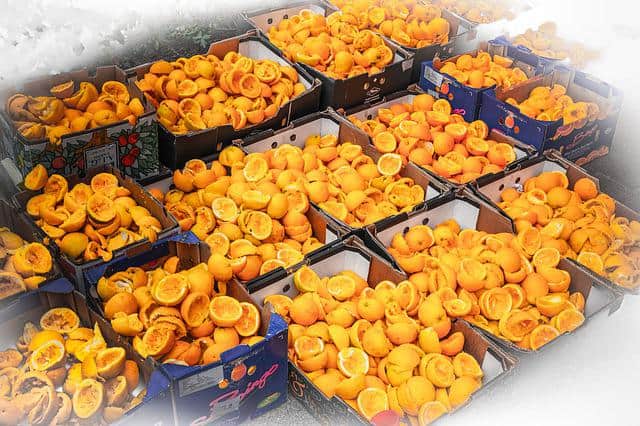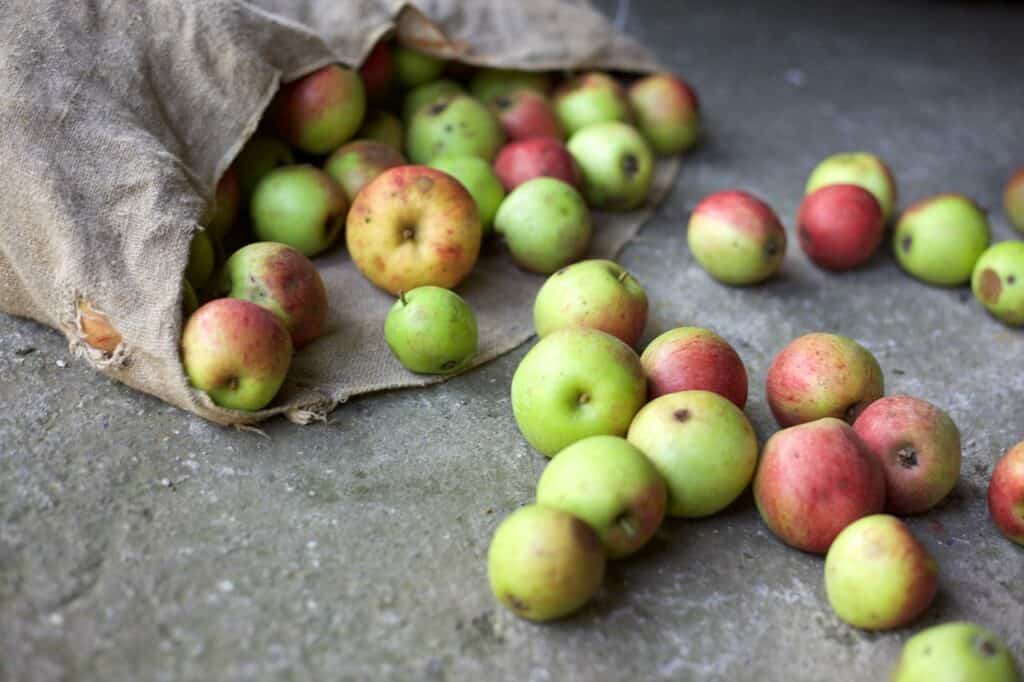Introduction – Supermarket Food Waste
As supermarket food waste has become more of a complicated topic in recent years, scientists, consumers, and campaigners alike have begun to pay more attention to it. It’s been dubbed a “global paradox” because even though agriculture is heavily promoted as a means of increasing food security, a third of the food produced is wasted.

Supermarkets are one of the leading contributors to food waste. In the United States, supermarket chains throw away approximately 43 billion pounds of food each year – that’s the equivalent of dumping one pound of food waste for every person in the country. Not only is this a huge waste of resources, but it also creates significant environmental and economic impacts.
The good news is that there are many ways to reduce supermarket food waste. By working with suppliers, increasing transparency, and implementing innovative technologies, supermarkets can make a big difference in the fight against food waste.
Supply Chain Waste
Our website has talked a lot about personal waste. Supply chain waste is a big problem too. The average supermarket throws away about 10 percent of its food supply each year. That’s a lot of wasted food, but it’s also a lot of wasted money. Supermarkets spend billions of dollars annually on food that never gets eaten.
One of the biggest causes of supply chain waste is over-ordering. Supermarkets often order more food than they need to get the best deals from suppliers. This practice results in large amounts of surplus food that eventually gets thrown away.
Supermarket Food Waste Impact
The impacts of supermarket food waste are far-reaching. Here are just a few examples:
- Environmental Impacts: Food waste is a major contributor to greenhouse gas emissions. The decomposition of organic matter in landfills emits methane, a powerful greenhouse gas that is 25 times more potent than carbon dioxide.
- Economic Impacts: Wasted food costs the supermarket industry billions of dollars each year. This wasted food could be used to feed people in need or sold at a discount to generate revenue.
- Social Impacts: Supermarkets are one of the leading contributors to food waste. In the United States, supermarket chains throw away approximately 43 billion pounds of food each year – that’s the equivalent of dumping one pound of food waste for every person in the country. Not only is this a huge waste of resources, but it also creates significant environmental and economic impacts.
Solutions To Reduce Supermarket Waste
There are many ways to reduce supermarket food waste. Here are a few ideas:
- Increase Transparency: One way to reduce food waste is to increase transparency throughout the supply chain. Supermarkets can work with suppliers to provide more information about where food comes from, how it’s grown, and when it will expire. This information can help supermarkets make better decisions about what food to order and how to sell it before it goes bad.
- Implement Innovative Technologies: Many innovative technologies can help supermarkets reduce food waste. For example, “smart” refrigerators can automatically order food when it’s running low, and “time-temperature” labels can help customers know when food is at its peak freshness.
- Work with Suppliers: One of the best ways to reduce food waste is to work with suppliers. Supermarkets can partner with suppliers to help reduce over-ordering, establish donation programs for unsold food, and find new uses for food that would otherwise be wasted.
By working with suppliers, increasing transparency, and implementing innovative technologies, supermarkets can make a big difference in the fight against food waste.
Ways That Can Help Solve The Supermarket Waste Crisis

Invest In Up-To-Date Inventory Management Solutions
More products and SKUs can be managed through automation and software advancements, making inventory management more scalable. Retailers in the United States are now adopting software to input shop layouts so that deliveries can be custom-organized in shelving sequence, allowing them to travel directly from the distribution warehouse to the retail floor.
To get their items from the warehouse to the store, retailers used intermediaries. Investing in new technologies can cut down on the number of perishables that end up being thrown away because of excess inventory and handling.
Savings are on their way, but they are still a long way from reaching their full potential. This could open the door to huge investments in inventory system technology if several pilots and minimally viable products (MVPs) are successful.
Include Farmers As Supply Chain Partners
At the beginning of the value chain, food waste occurs. Around 7% of U.S.-grown produce is lost each year. This is partly due to the inclination to overgrow as a hedge against weather and illness, as well as altering wholesale and retail demand. More retailers interacting directly with farmers or pushing intermediaries to communicate with farmers can reduce agricultural food waste.
This collaborative approach to dealing with suppliers emphasizes long-term supply chain sustainability over short-term profit gain. M&S works with its farmers to divert surplus produce from landfills to food banks through Company Shop and FareShare.
Food corporations may also partner with agri-tech businesses to reduce waste, increase output, and improve market access. Real-time market data from apps like Farming Data helps smallholder farmers sell their goods more efficiently. Big merchants are helping commercialize these techniques to make high-quality food cheap for everyone.
Increase The Efficiency By Eliminating Traditional Waste-Producing Habits
Traditional food retail procedures can unintentionally contribute to food waste, according to a new study. Retailers are increasingly refusing to purchase fruits and vegetables that even slightly depart from the perfect look. Wal-Mart and Morrisons are experimenting with selling “wonky” veggies at discount pricing to reduce food waste.
Furthermore, because of the short shelf life of fresh food, supermarkets are frequently left with an overabundance of it. Sainsbury’s, M&S, and Kroger don’t just toss out unsold but still edible food; they’re establishing statewide systems to distribute it to charities.
Product labeling is another practice that adds to food waste. Customers sometimes mistake “best by” dates for expiration dates and toss away food before it spoils. In many places, manufacturers establish these dates to guarantee that food is consumed at its freshest. Food processors are being urged by major industry groups to simplify their labeling. Efforts are currently continuing, but they are still largely voluntary and dispersed.
Large food merchants can take a leading position in this area because they hold private label food products and a lot of shelf space for them. Food makers might be urged by retailers to remove or replace the “best by” labeling with “best if used by.”
Also, “sell by” labels can be used to indicate the expiration date of particularly perishable commodities. Even the East of England Co-op is considering extending the “best by” dates on food items in its stores. The shelf life of their items can be extended by merchants experimenting with new packaging technologies.
Join Forces With The General Public
In recent years, as disposable incomes have grown, so has consumer food waste. Fewer than 3% of the population considers food-wasting to be a socially unacceptable practice among young people. Changing behaviors takes time, but food stores can help customers reduce food waste at home.
Sainsbury’s found that customers view supermarkets as a resource for reducing food waste. Supermarkets like The Co-operative in the UK publish free food magazines with waste-reduction tips and recipes. Chefs and supermarkets can work together to teach how to use leftover materials and food in new and creative ways. It’s a great approach to teaching people, especially kids, about reusing and recycling food.
We know that behaviors can be changed. Only a few years ago supermarkets used single-use plastic bags and now the customer use of reusable shopping bags ubiquitous at Aldi’s and similar businesses are widespread.
Organizing “waste less” initiatives can also be done by food service providers. Several companies have used crowdsourcing to connect with their customers and gather ideas for reducing food waste and preventing famine.
It’s not just grocery stores that stand to gain from a circular approach to reducing food waste. Partnerships with farmers, processors, non-profits, agri-tech, and social enterprises can help food retailers reduce food waste. As companies become more community-minded, food retailers can connect with suppliers and customers to reduce food waste and build stronger relationships.
Apps That Fight Food Waste

One of the most popular apps that connect people like you and me with food producers that generate waste is “Too Good to Go“. This app lets food producers advertise super cheap products that are about to be thrown out and let customers have a chance at buying it for a very low price.
The app doesn’t help out with the totality of supermarket waste. In addition, it doesn’t directly address supermarket food waste either because of its diffuse client base of any food producer.
Another app in the same space is “Karma”. Karma Food is an app that helps end food waste by connecting food businesses with consumers. It allows restaurants, cafes, and other food businesses to list their surplus food at a discounted price, and consumers can purchase it through the app.
This helps businesses to reduce their food waste and allows consumers to access quality food at a reduced cost. The app also provides a platform for businesses to donate their surplus food to those in need. Karma Food is a great way to reduce food waste and provide healthy and affordable food to people in need.
We cover food apps among other “green” apps.
Conclusion
The amount of food that is thrown away in supermarkets is significant, but these establishments also have the potential to be industry leaders in the fight against food waste. Supermarket chains can apply creative solutions to reduce their environmental effect and develop a more sustainable food system if they collaborate with their suppliers, customers, and other stakeholders to achieve these goals.
